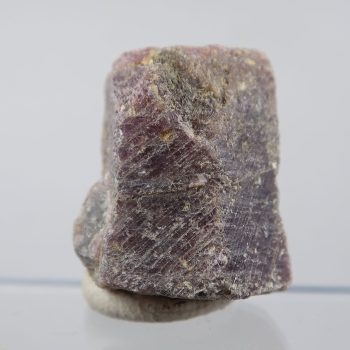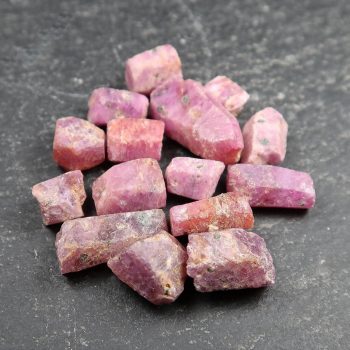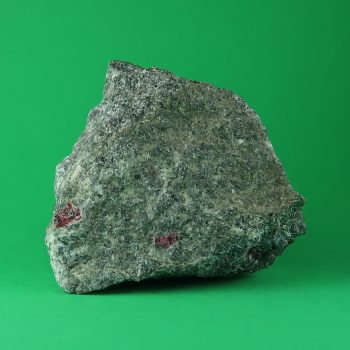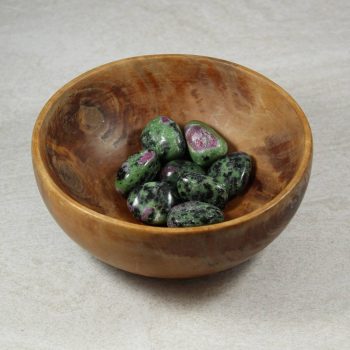Ruby
Rubies are a lovely red gemstone famous for their use in jewellery. Many of the mineral specimens are of a lower quality than the gemstone grade specimens.
They are often inclusions in other minerals, such as fuchsite or Zoisite. Rubies make an excellent display piece, with good colours and usually good UV fluorescence too!
We do also sell a limited selection of Rubies for jewellery making.
Showing all 4 results
-

Corundum Specimens / Rough (Purple)
Price range: £2.00 through £4.00 -

Corundum Specimens / Rough (Red/Ruby)
Price range: £2.00 through £4.00 -

Ruby in Pargasite from Mundarara mine, Tanzania
£3.50 -

Ruby in Zoisite Tumblestones
£4.95
Appearance, Uses and History
Ruby is a gemstone variant of Corundum, and one of the worlds most beloved gemstones.
It is important to note that many people will consider pink-red stones Ruby, too – however, this is a hotly debated subject. The term ‘Sapphire’ refers to the other colours of gem Corundum.
It is a little difficult to get a handle on exactly where the distinction occurs, however, and for mineral specimens, I tend to refer to them as ‘red Corundum’.
The quality of a Ruby is determined by their colour, cut, clarity, and carat weight – the ‘4 C’s‘.
Ruby is typically used as a decorative stone or a gemstone – although there are uses in industry, these are typically done with synthetic Corundum.
Locales
Excellent mineral specimens (and some cuttable stones) are found in Afghanistan, Australia, Burma, India, Kenya, Madagascar, Mozambique, Myanmar, Nepal, Norway, Pakistan, Russia, Sri Lanka, Tanzania, the USA, and Vietnam.
Mineralogy
Hazards and Warnings
Almost all rocks, minerals (and, frankly, almost all other substances on earth) can produce toxic dust when cutting, which can cause serious respiratory conditions including silicosis.
When cutting or polishing rocks, minerals, shells, etc, all work should be done wet to minimise the dust, and a suitable respirator or extraction system should be used.
Translations
Arabic:
- ياقوت
Hindi:
- माणिक
Portuguese:
- Rubin
- rubi
Bengali:
- চুনি
Indonesian:
- Rubi
Punjabi:
- ਰੂਬੀ ਰਤਨ
English:
Italian:
- Rubino
Russian:
- Рубин
French:
- Rubis
Japanese:
- ルビー
Spanish:
- Rubí
German:
- Rubin
Korean:
- 루비
Thai:
- พลอยทับทิม
Gujurati:
- રૂબી રત્ન
Mandarin and Traditional Chinese:
- 红宝石宝石
- 紅寶石寶石
Urdu:
- روبی
